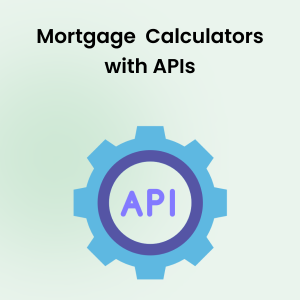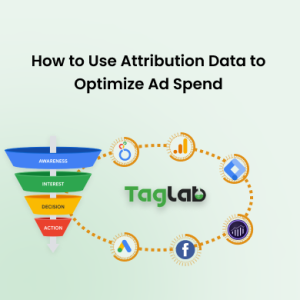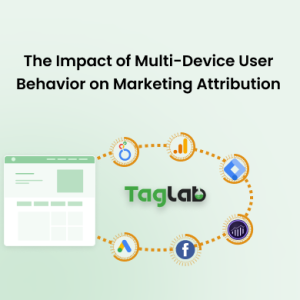Your cart is currently empty!
Multi-Touch Attribution Engagement Metric Definition
Posted by:
|
On:
|
Multi-Touch Attribution Engagement measures how effectively various marketing touchpoints engage customers throughout the customer journey. By distributing credit to each touchpoint based on its role in engaging the customer, this metric helps businesses understand which channels and interactions drive the most customer engagement, leading to conversions.
Detailed Explanation
What is Multi-Touch Attribution Engagement?
Multi-Touch Attribution Engagement represents the degree to which customers interact with multiple marketing touchpoints before converting. This model assigns credit to all touchpoints that play a role in driving engagement, from initial awareness to final conversion. Unlike single-touch models, which focus on just one interaction, multi-touch attribution provides a more comprehensive view of how different channels and campaigns work together to engage customers throughout the journey.
How it Works?
Multi-Touch Attribution Engagement is calculated by assigning engagement value to each touchpoint a customer interacts with before conversion, using an attribution model such as linear, time decay, or position-based. Each touchpoint receives a portion of the credit based on its role in driving engagement:
Engagement Value = Total Engagement Score x Attribution Model Credit for Each Touchpoint
This approach allows businesses to analyze how different channels, content, and touchpoints contribute to overall engagement, helping to optimize marketing strategies for improved customer interaction.
Types of Multi-Touch Attribution Models for Engagement
- Linear Attribution: Assigns equal engagement value to all touchpoints in the customer journey, providing a balanced view of how each interaction drives engagement.
- Time Decay Attribution: Gives more engagement credit to touchpoints that occur closer to the conversion, emphasizing the importance of recent interactions in driving engagement.
- Position-Based Attribution: Allocates more value to the first and last touchpoints, highlighting the importance of initial awareness and final conversion interactions.
- Custom Attribution Models: Allow businesses to tailor attribution models based on specific customer behaviors and interactions to better reflect unique engagement patterns.
Illustrative Scenarios
Examples
- An e-commerce brand uses a linear attribution model to measure engagement across email, social media, and paid ads. Each channel receives equal credit, helping the brand understand that all touchpoints play an essential role in engaging customers, resulting in a 75% engagement rate.
- A financial services company employs a time decay attribution model to assess customer engagement across their marketing funnel. They find that webinars and remarketing ads drive the most engagement in the final stages of the customer journey, leading to a 60% engagement rate.
Segmentation
Multi-Touch Attribution Engagement can be segmented by channel, customer type, or campaign type. For example, segmenting engagement by channel helps businesses determine which touchpoints drive the most customer interaction and allocate resources to the most effective channels.
Factors Influencing Multi-Touch Attribution Engagement
- Choice of Attribution Model: The type of attribution model selected (e.g., linear, time decay) affects how engagement is distributed across touchpoints, influencing insights into customer interactions.
- Customer Journey Complexity: More complex journeys with multiple touchpoints require sophisticated attribution models to accurately measure engagement at each step.
- Channel Effectiveness: The performance of individual channels (e.g., social media, email, paid ads) directly impacts how much engagement is attributed to each channel.
- Data Quality: High-quality data on customer interactions is essential for accurately attributing engagement. Incomplete or inaccurate data can skew results.
- Touchpoint Relevance: The relevance and personalization of each touchpoint in the customer journey influence how effectively it engages customers.
Strategies to Improve Multi-Touch Attribution Engagement
- Select the Right Attribution Model: Choose an attribution model that aligns with your customer journey and marketing goals to gain accurate insights into engagement.
- Enhance Personalization: Tailor content and messaging for each touchpoint to improve relevance and drive stronger engagement throughout the journey.
- Focus on High-Engagement Channels: Use attribution data to identify which channels drive the most engagement and allocate more resources to these touchpoints.
- Test and Optimize Campaigns: Continuously test different campaign strategies, channels, and touchpoints to refine your approach and boost engagement.
- Improve Data Collection: Ensure accurate tracking of customer interactions across all touchpoints using tools like Google Analytics, CRM systems, and marketing automation platforms.
Benchmark Indicators
Understanding Multi-Touch Attribution Engagement benchmarks by industry helps evaluate the effectiveness of marketing strategies and touchpoints in driving customer interactions:
- Technology Industry: Typical engagement rates range from 60% to 80%, with multiple touchpoints such as email campaigns and webinars playing significant roles in customer interaction.
- Healthcare Industry: Engagement rates often range from 50% to 70%, driven by personalized communication and educational content that builds trust with potential patients.
- Financial Services: Engagement rates generally fall between 55% and 75%, with multi-channel touchpoints such as content marketing, webinars, and retargeting ads playing key roles.
- E-commerce: Engagement rates range from 70% to 85%, depending on the effectiveness of personalized recommendations, retargeting, and social media campaigns.
- Education Sector: Engagement rates can vary from 40% to 65%, influenced by the relevance of content, email nurturing, and digital campaigns focused on student acquisition.
- Real Estate: Engagement rates often range between 50% and 70%, as successful campaigns depend on personalized communication, follow-up touchpoints, and social media marketing.
Tools for Measuring Multi-Touch Attribution Engagement
- Attribution Platforms: Tools like Google Analytics, HubSpot, and Adobe Analytics provide insights into customer interactions across different channels and touchpoints, enabling accurate engagement measurement.
- CRM Systems: Integrating CRM systems like Salesforce with attribution tools helps track customer interactions and attribute engagement value to specific touchpoints effectively.
- Marketing Automation Platforms: Tools like Marketo and Pardot allow businesses to automate engagement tracking and monitor how different touchpoints influence customer behavior throughout the journey.
Common Pitfalls and Mistakes
- Choosing an Inaccurate Attribution Model: Using an attribution model that doesn’t accurately reflect the customer journey can lead to incorrect engagement insights and misguided marketing decisions.
- Not Integrating Campaigns: Failing to integrate campaigns across multiple channels can result in missed engagement touchpoints, leading to inaccurate insights.
- Poor Data Quality: Incomplete or inaccurate data on customer interactions can skew engagement results, leading to flawed attribution analysis.
- Not Using Engagement Data to Optimize Campaigns: Failing to use attribution insights to improve campaigns can result in missed opportunities to increase engagement. Regular analysis and optimization are essential.
- Overlooking Personalization: Generic touchpoints and messaging can lead to lower engagement rates. Personalized interactions are crucial for capturing customer interest and driving meaningful engagement.
Frequently Asked Questions
What is Multi-Touch Attribution Engagement?
Multi-Touch Attribution Engagement measures how effectively various marketing touchpoints engage customers throughout the customer journey, distributing credit to all interactions that contribute to engagement.
Why is Multi-Touch Attribution Engagement important?
Multi-Touch Attribution Engagement is important because it helps businesses understand which channels and interactions drive customer engagement, allowing for better campaign optimization and resource allocation.
How can I improve Multi-Touch Attribution Engagement?
To improve engagement, select an appropriate attribution model, enhance personalization, focus on high-engagement channels, test and optimize campaigns, and improve data collection across touchpoints.
What factors influence Multi-Touch Attribution Engagement?
Factors influencing engagement include the choice of attribution model, customer journey complexity, channel effectiveness, data quality, and the relevance of each touchpoint.
What are good benchmarks for Multi-Touch Attribution Engagement?
Good benchmarks for Multi-Touch Attribution Engagement vary by industry, with rates above 80% considered excellent, while rates below 40% indicate a need for improvement.



